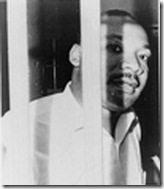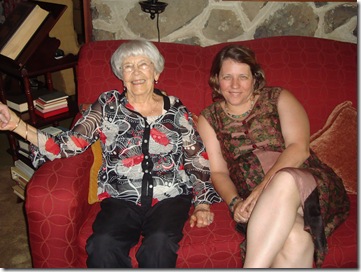September 15, 2009
"If your non-profit isn't acting with as much energy and guts as it takes to get funded in Silicon Valley or featured on Digg, then you're failing in your duty to make change." Quote from Seth Godin's blog entry, "The Problem With Non," posted September 15, 2009.
* * *
This is the fifth in my blog series about using social media to build community organizations. Part I of this series was inspired the Moderator of the Presbyterian Church, Bruce Reyes-Chow, who blogged about "Top Ten Reasons Churches and Pastors Resist Social Media". On the same day I read his post, I also attended a meeting of the Outreach Committee of my own church. One of the issues that came up at that meeting was the issue of balancing budgeting priorities among various things like newspaper ads, web page design, resources to keep the web page updated, investment in wireless Internet and other technologies for the church building. During this conversation, I observed a distinct generation gap: An older member of the group was discussing the need for a newspaper ad, and a younger member of the group replied with a comment that both shocked and enlightened. He said that most young people will not look at a newspaper to find a church; they will use Google and look online.
I agree. Paper is becoming increasingly irrelevant in my own household.
The next Sunday, as I looked across the heads of people in the sanctuary for church, I noticed that most of them had gray hair. Where are the "young" people? Are they failing to engage in community, or are they just failing to engage in my community? If they are not attracted to my community, then what is it about my community that fails to appeal? Does my own community in fact lack vitality, or is it just missing one element, perhaps communication? It's a crisis, as local community organizations, not just churches, struggle with how to remain engaged and vibrant in the local community. What makes people want to be a part of that? What is the role of social media in the local organization, and what role is played by the non-geographic community?
As my thoughts grew, so did the length of this series on using Social Media to Build Community Organizations.
I believe the Internet is to the Printing Press as the Nuclear Bomb was to Conventional Warfare. The Internet, and Social Media, has been released in the world. The fallout from that mushroom cloud is transforming society. The question is, how will we respond? Immediately after "the Bomb" was dropped, Japan knew that something fundamental had shifted in the way war could be conducted. Surrender was almost immediate. We ought to surrender our ideas about conventional communication just as quickly. Assuming we do want to keep pace with the 21st Century, which way do we go?
Here's how one church has gone. For what it's worth, the church that created this video also offers an "online" congregation in addition to traditional services:
The notion that the Internet has changed the way our society operates is not news to anyone. In his book The World Is Flat, Thomas Friedman discusses the revolutionary ways in which the Internet has created opportunities for dispersal of information. The Internet has eliminated geographic obstacles and boundaries for many kinds of human endeavors. People can now engage in communities that are no longer restricted to one geographic locale. As a result, the fundamental geography of human relationships has now shifted also.
Here's another video, this one discussing the emergent church and challenges to the future of the institutional church. But, do we really have to choose?
In my view, social media is vital to any congregation or community organization that seeks to remain relevant in today's world. I can't tell you how or what or give a simple roadmap about how to make your organization relevant and vital. All I can say is, you'd better figure it out or your organization will go the way of the small family farm or the mimeograph machine. In this series, I've tried to provide some thoughts as well as some concrete suggestions that might help in terms of finding the right balance.
There are many beneficial side effects of opening the world of ideas and communication to everyone. In Part II of the series, I used the story of Mary and Martha to illustrate what I viewed as the importance of paying heed to both aspects of human nature: the mental and imaginative side (as represented by Mary) and the embodied and practical side (as represented by Martha). I urged that churches ought to find ways of embracing and incorporating social media. I linked to a web site showing how to create a podcast and to a YouTube video discussing the value of Twitter.
There's just one problem, though. The Marthas among us rightly ask with alarm, "If we focus purely on the world of ideas, and build our community around that, what happens to the local soup kitchen?" This led to Part III of this series, in which I urged that social media, itself, is not the enemy. Social media is a tool, and we simply must learn how to use it wisely -- and with intention -- to build community at the local level.
On the other hand, there are indeed those among us who don't feel any particular commitment to local community. They may even take a laissez faire attitude that if a local community organization dies, it must not have been relevant anyway. Like a business that fails to match with its target market. In Part IV of this series I argue in favor of local community. I confess, I am a social media maven. I feel deeply nurtured by my online community and contacts. Yet, I am also deeply and profoundly embedded in and committed to my local community. I was separated from my local church while I lived in China for four years. Like the Prodigal Son upon his return, my absence from my local church helped me learn to appreciate it more deeply upon my return. Not only am I in love with my local church, I also think there is value in my being accountable and responsive to my local church. Though it's not always a message I want to hear, sometimes I need to be reminded that I should wash dishes at the local soup kitchen, and I especially need to be reminded on those days when I don't feel like it.
Yet I still return to the idea that we must nurture every side of our Being, not just our embodied, physical self but also our spiritual and intellectual side. And churches are making a grave mistake if they think it's just a matter of "publicity". Social media is a new way of thinking, relating, of doing business, of being in relationship!
Social media has revolutionized not only how we communicate, but how we think. My brother-in-law is a pediatrician. When my youngest child was born, he told me "No TV until Munchkin is two years old. The difference in stimulation changes the way the brain is physically wired." Well, right. It changes the way we think, literally. There has been a sea change, and we are witness to it. I observe young people and they do think differently, perceive differently, and relate differently, than I do. Just as I think, perceive and relate differently than my parents and my grandparents. It's not really practical just to get rid of the TV and the computer and the telephone. We live in the Age of the Internet. What I propose is that we find wholesome and fruitful ways to embrace and utilize the new technology.
This leads me now to propose the following concrete suggestions concerning use of social media by churches and other community organizations:
(a) Social media can be used to strengthen individuals personally through access to information and resources. In furtherance of this goal, community organizations can enable access to information by installing internet (preferably high speed, wireless), and making it available to their constituents. Churches can organize training and sharing sessions such as instruction in Internet use. Churches should make sure that all children are trained in how to keep themselves and their personal information safe from Internet predators.
(b) Social media can nurture healthy online communities through opportunities for wholesome and healthy interaction. Social media has spurred new ways of meeting and talking, such as chats and tweetups. Church groups can facilitate chats and tweetups. Churches need to be proactive about training and guiding young people in safe use of these activities.
(c) Social media can nurture deeper relationships among individuals within the local community by enabling greater depth of communication about subjects not normally discussed in chatty conversations. Churches and community organizations can encourage deeper communication and blogging. Specific topics can be used as conversation starters, much like a Sunday School class discussion format. Volunteers could take turns moderating these discussions.
(d) Social media can be used to broadcast detailed information about local community organizations and events. To be useful communication tools, church web pages need to be relevant, engaging, and up to date. Twitter and Facebook also offer venues for communication of current events. Churches can create events on Facebook and encourage members to publicize the events through this medium.
(e) Social media can be used to educate virtual bystanders or researchers about the local community organization and opportunities within that community. Most people in the younger age groups no longer look in a newspaper to get information about local organizations and volunteer opportunities. Instead, they will look online to find a community organization. Is your organization's web page interesting and inviting? Do you give clear instructions about location and contact information? Are dates and times of events clearly stated and readily apparent from a glance at your web page?
(f) Social media can be used as a resource for sharing events such through media such as video and audio broadcast and photo sharing. Is your organization taking advantage of easy digital technology, free resources for creating and broadcasting podcasts? Do you post video of your best sermons and outreach activities on YouTube?
(g) What possibilities have I not thought of? I am interested in the general project of using online resources to strengthen individuals and community -- in all these ways -- both among geographically dispersed people as well as within geographically local community. What other ways is your church using social media? Please share in a comment below!
In conclusion, social media can expand horizons of communication for both individuals and for local community organizations. Social media does this not only by enabling relations that are not bound by geographic restrictions, but also by increasing effectiveness of communication within the local community. In so doing, it can deepen relationships of individuals who work within local community organizations and strengthen ties in the local community as well as in the "virtual" community. I hope to continue to blog and journal about this. Please comment as well!














